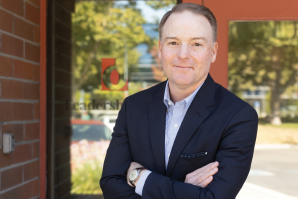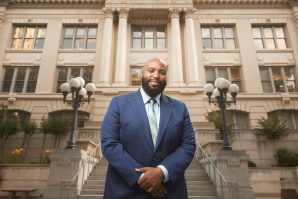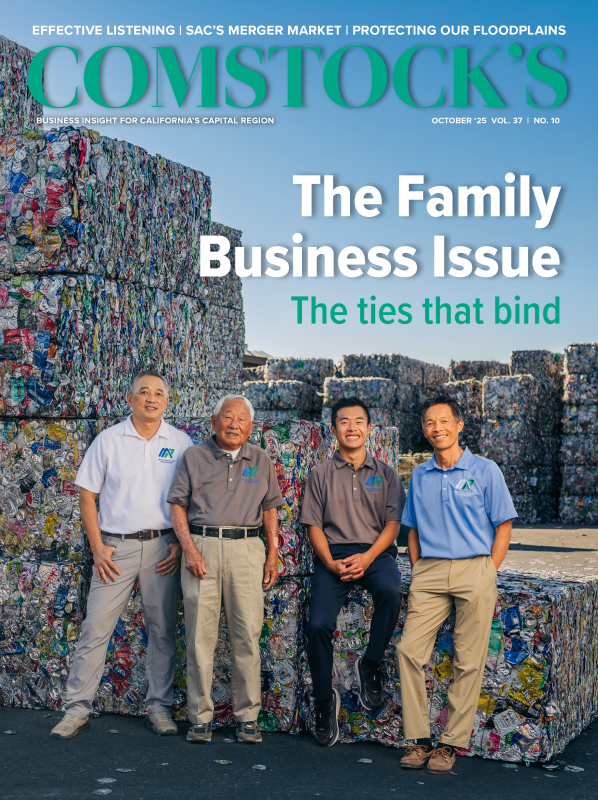A global marketing team in a large fitness and wellness company was struggling with communication and collaboration. One team member was labeled “difficult” for questioning budgets and pushing back on ideas. The company was planning on cutting him loose. The team’s majority preference for connective brainstorming and ideation clashed with his analytical style. He was blamed for slowing things down, leading to tension and isolation.
Allison O’Brien, vice president of enterprise learning for LQ Listening Intelligence (formerly Echo Listening Intelligence) was hired to help the team solve their communication challenges. She used the ECHO Listening Profile — a scientifically validated listening assessment that measures individual listening styles — to evaluate the team. A noteworthy profile emerged: Eight of the nine team members had similar listening habits and preferences, while one was very different.
“This was a team who were highly connective and conceptual listeners, but their initiatives rarely panned out,” says O’Brien. “The outlier was the lone analytical listener and was the one asking about cost and details. As a result, he was alienated from the team, and they did not appreciate his contributions.”
Related: The Evolution of Leadership Styles: Several factors influence managers
After reviewing the data results in a non-emotional way, the team was able to reframe the outlier’s input as valuable rather than disruptive. They realized they actually needed him. “Instead of avoiding him and not inviting him to certain meetings, he became almost elevated,” she says.
Navigating communication in the workplace can be tricky. According to O’Brien, each person brings their own preferential or habit-based patterns and traits to the table, which can be messy. But experts agree the most effective way to improve communication is by first gaining self-awareness — understanding your own personality traits, behaviors and listening preferences — then learning to recognize and appreciate those in others.
“When someone communicates in a way that’s very different than the way we communicate or want to receive information, then we make assumptions about them and that can create tension and conflict and blame.”
Allison O’Brien, vice president of enterprise learning, LQ Listening Intelligence
There is no shortage of assessments to help with this, and most professionals have taken at least one: Myers-Briggs, Strength Finders, Emergenetics, DISC, ECHO Listening Profile and many others. Assessments tend to fall into three buckets: personality, behavior and cognition. Personality tests measure hardwired traits, behavioral tests measure motivations and adaptability, and cognitive tests measure how the brain processes information.
“There’s value in layering or combining assessments that measure for different things,” explains O’Brien. “We make assumptions about others and what we perceive in the way they communicate. So, when someone communicates in a way that’s very different than the way we communicate or want to receive information, then we make assumptions about them, and that can create tension and conflict and blame.”
Jessica Kriegel, who has a Ph.D. in human resources development and educational leadership and management, sees that tension all the time. The workplace culture expert, author and chief strategy officer for Culture Partners says poor communication often masks a deeper issue: when employees’ beliefs don’t align with the actions the company wants them to take. Through her doctoral research and numerous consulting engagements, she has been able to quantify what is missing from successful workplace culture.
She calls it the Results Equation — a tested model that aligns an organization’s purpose, strategy and culture to deliver consistent results. Instead of fixing surface behaviors, like asking salespeople to make more cold calls, she works with companies to change the belief systems that drive those actions. And she does that through experiences with storytelling, feedback and recognition, all important elements of communication.
“All of our beliefs come through the experiences that we have, so we ask our clients what experiences they need their employees to have in order to shift that belief to align with the results the company is trying to achieve,” explains Kriegel. Instead of focusing on what everyone is complaining about, she starts at the leadership level to understand what the goal is. “Once we understand that, we can intentionally create experiences at scale that highlight and promote those shifts, so it’s actually all about creating adaptability as a muscle in the organization.”
Kriegel and her team conducted research with Stanford University to determine which culture types were the most successful. They looked at the purpose, strategy, culture and revenue of 243 companies over the course of three years, and there was only one culture type that significantly correlated with increased revenue: an adaptable culture. “It’s the ability to shift from one set of beliefs to another that is the superpower; that’s the exponential multiplier of driving results,” she says.
Kriegel worked with Joshua’s House Hospice, a Sacramento nonprofit organization that provides hospice care to terminally ill homeless men and women, to determine the best way to hire employees who would stay long term. “They were looking to attract the right talent, but also wanted to retain that talent and make sure they were motivated and fulfilled in their work,” says Kriegel. Instead of a culture fit, Kriegel and her team advanced a purpose fit, where the organization’s purpose and the personal purpose of those they hired were aligned.
“We helped them identify their purpose, which is to give humanity a home. That became the calling card for every aspect of their organization — employees, volunteers, fundraising. The personal purpose of their partners had to match the organization’s purpose, which made people more motivated to sign on long term,” she says.
“The ability to listen and take other perspectives, that is a uniquely human thing and sometimes gets taken for granted.”
Rabbil Green, career development and learning manager, SMUD
While Kriegel’s work underscores how aligning belief systems and purpose can transform workplace culture, others like Dawn Karner emphasize the importance of individual awareness and emotional intelligence as key drivers of effective communication. Karner is a Woodland-based learning and development professional who focuses on conversational intelligence and emotional intelligence. She offers one-on-one coaching and has taught extension courses at UC Davis and worked with the Yolo Transportation District and Cache Creek Casino.
Related: Millennial Management: Managers under 40 in the Capital Region draw from personal and professional experience to lead their teams
“Emotional intelligence is really about bringing the whole person into your work, your communication and your relationships. It’s about knowing who you are and then reaching out and figuring out what impact that has on your communication or relationships with others,” Karner says.
She notes that emotionally intelligent leaders recognize the humanness of the people they lead and display a level of humility and grace. She gives an example of a leader she worked with who was close to being fired from his job. His employees complained about him and didn’t want to work with him. She had him take an emotional intelligence assessment, which showed a high level of intrinsic motivation but a very low level of empathy. His attitude was harsh: either people were on the bus with him, or he would run them over.
“When he realized that was how he was perceived, he was devastated, because that’s not who he wanted to be,” Karner explains. Over an eight-week period, the leader made some significant changes to improve his emotional intelligence but realized that his boss was using him as an enforcer and a scapegoat when the employees complained, instead of supporting him.
“He left that company and was able to take his newfound skills to another organization that appreciated his contributions. He has been exceptionally successful and moved up the corporate ladder, but now he’s the kind of leader he wants to be and one his employees respect,” says Karner.
Like Karner, Rabbil Green believes that effective leadership and communication require intentional development. As the career development and learning manager for SMUD, Green works with internal teams to help elevate their workplace communication through various training courses that range from civility workshops to trust classes. Last fall his career development and learning team read “Bridge the Gap: Breakthrough Communication Tools to Transform Work Relationships from Challenging to Collaborative” by Sacramento-area authors Jennifer Edwards and Katie McCleary.
Katie McCleary wrote a book about effective communication called
“Bridge the Gap.” She’s also CEO of LQ Listening Intelligence, a
research-backed quiz that assesses your listening style.

Wanting to proactively promote civility in workplace communication — particularly around the period leading up to the 2024 presidential election — Green saw an opportunity to equip staff with tools for respectful, civil dialogue. He worked with Edwards and McCleary’s company, Bridge the Gap, to create a program around that focus. (McCleary is also now CEO of LQ Listening Intelligence.)
“We weren’t necessarily trying to induce conversations, but saw it as an opportunity to preempt being positively proactive by offering a civility workshop,” he says. Participants were taught there is power in just being present and having a calm nervous system when someone else is talking to you, without interjecting or attempting to solve the problem. “The ability to listen and take other perspectives, that is a uniquely human thing and sometimes gets taken for granted,” explains Green.
McCleary believes that listening has been completely misrepresented and misunderstood. “It’s always the thing that falls flat because we teach it as active listening and active listening is junk. It’s not scientific. Anybody can fake that they’re listening. There are certain ways that people show up that we teach in listening intelligence. From body language, to energy and tone to the statements that people make and the questions that they ask. In that moment, in real time, it’s up to each person to shift, so that they can connect better and faster.”
Based on a Harvard Business Review research study that ran a strategic execution exercise more than 100 times over 12 years, the more cognitively diverse the team, the faster they solved problems.
Related: Investing in Inclusion: How consultants help businesses incorporate diversity, equity and inclusion into how they do business
Even with training and intentional skill building, communication challenges can persist if people don’t understand how others think and process information. That’s where listening intelligence expert O’Brien believes the real magic happens.
“When people gain this fundamental understanding that we as humans process information differently, and that it is not because of who we are but of cognitive habits that we’ve developed over time, you start to see a lot of the underlying tension and resentment and conflict get dismissed and then we can really communicate at a level to effectively get work done and collaborate.”
–
Stay up to date on business in the Capital Region: Subscribe to the Comstock’s newsletter today.
Recommended For You

The Evolution of Leadership Styles
Several factors, including lockdown and generational differences, influence managers
The pandemic, the rise of Gen Z and new cultural norms have all contributed to a shift in the values we expect from modern leaders. Understanding these trends — and the strategies required to keep up — is crucial for any leader who wants to retain employees, inspire their best work and even continue their own career.

How Sacramento’s Young Professionals Forge Their Own Paths
Comstock’s was humbled by the high number of nominations we
received for our 2025 Young Professionals issue. In fact, we got
the most nominations ever. There are so many impressive rising
stars in our region, we thought we’d ask some of the nominees
their thoughts on leadership, how they spend their workday and
what advice they have for others who are just starting out.

Millennial Management
Managers under 40 in the Capital Region draw from personal and professional experience to lead their teams
A cohort of leaders under the age of 40 making a difference in the Capital Region. What people like Rhodes lack in age and decades of professional accomplishments, they make up for with lessons learned through family and experiences.

How Sacramento Is Investing in Creativity
Sacramento’s art and culture office seized a rare opportunity to splurge on economic development. Here’s how millions were spent
Sacramento’s Office of Arts and Culture, which traditionally
funded arts institutions such as theaters and museums, took
advantage of a windfall during the pandemic to help grow the
creative economy more broadly. Can the support last?




